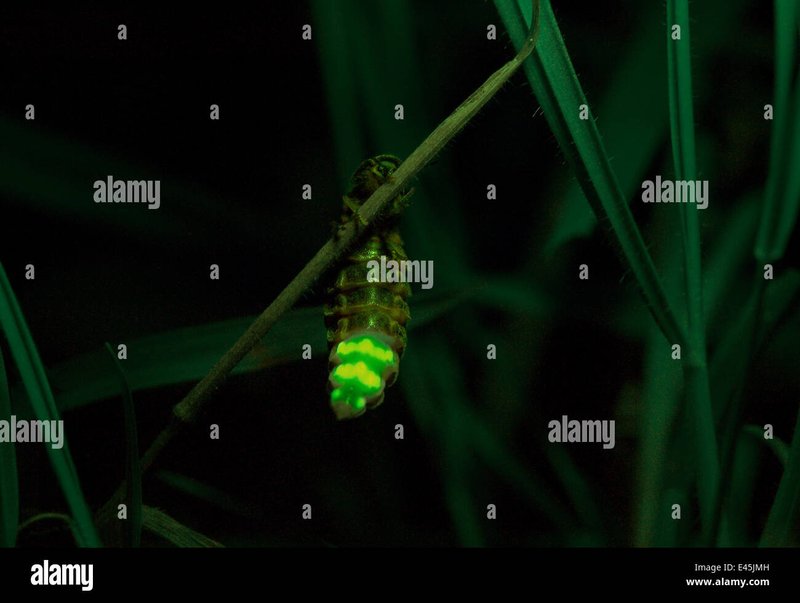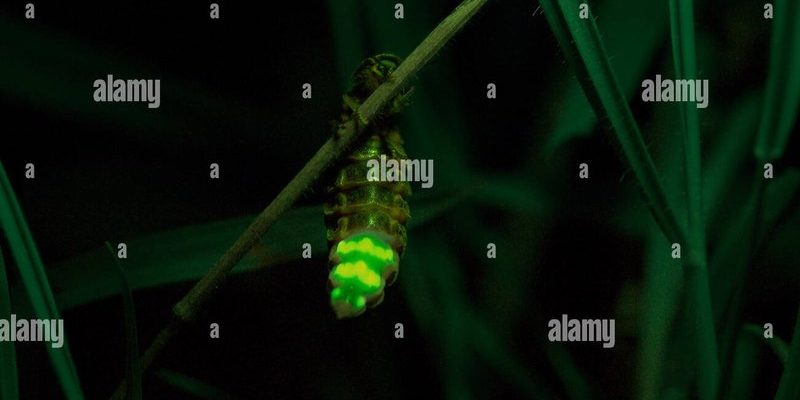
Imagine stepping into a dark forest, and suddenly, thousands of tiny lights flicker around you. These glow worms are not only beautiful but also play a critical role in their ecosystem. They attract insects to their sticky silk threads using their bioluminescence. But what kinds of insects are drawn to this light? Understanding the nocturnal insects that interact with glow worms can help us appreciate the intricate relationships in nature — even those that happen under the cover of night.
In this article, we’ll explore the different types of nocturnal insects that are often found mingling with glow worms, how these interactions occur, and what it all means for the ecosystem. So, pull up a chair, pour yourself a cup of something warm, and let’s shed some light on these nighttime wonders.
What Are Glow Worms?
To kick things off, let’s get to know glow worms a bit better. These fascinating creatures are actually the larvae of certain beetles, mainly from the family Lampyridae, commonly known as fireflies. But here’s the twist: the term “glow worm” can refer to various glowing larvae, including those of different fly species.
Glow worms emit light through a chemical reaction in their bodies, which creates a beautiful glow. This bioluminescence serves a vital purpose—it helps attract food. The glow serves as a lure for unsuspecting insects, which get caught in the sticky silk threads the glow worms produce. This makes them not just pretty but also clever predators!
You might be wondering how they create such an effect. The glow is produced by luciferin, a compound that reacts with oxygen, and an enzyme called luciferase. When these combine, they create light without heat—a process called *bioluminescence*. It’s like having a light bulb that never needs a battery!
Nocturnal Insects Attracted to Glow Worms
Now, let’s take a closer look at the kinds of nocturnal insects that are drawn to glow worms. Many creatures come to visit these luminescent larvae, but some of the most notable ones include:
- Moths: Moths are probably the most famous visitors to glow worms. These insects are naturally attracted to light, making them frequent guests in glowing areas. They often get ensnared in the silk traps, providing a meal for the glow worms.
- Beetles: Some beetles are also known to be active at night. They may approach glow worms out of curiosity or for protection, hoping to find a meal or safe haven amidst the glowing silk threads.
- Caddisflies: Similar to their moth cousins, caddisflies are attracted to the glow because of their instinctual behavior of seeking light. However, they can sometimes become part of the glow worm’s dinner too!
These nocturnal insects play a crucial role in the glow worm’s lifecycle. When they get caught, it’s not just a meal; it’s part of the natural cycle that keeps everything in balance.
The Role of Moths in Glow Worm Ecosystems
Let’s dive deeper into one of the key players in this interaction: moths. These winged wonders are more than just pretty faces flitting around at night. Their attraction to light has made them a significant part of the life cycle of glow worms.
Moths are equipped with specialized antennas that help them detect pheromones and other chemical signals. When they sense the light from glow worms, they’re naturally drawn to it. However, this is where things get a bit tricky. While moths are instinctively searching for food or mates, they often overlook the dangers of the sticky silk threads.
The interaction doesn’t just end with the moths getting caught, though. This dynamic creates a sort of dinner party for the glow worms. When a glow worm consumes a moth, it not only nourishes itself but also plays a part in maintaining ecological balance. The presence of moths ensures that glow worms can thrive, and in turn, the health of the ecosystem is preserved.
How Beetles Interact With Glow Worms
Moving on to beetles, these fascinating creatures often find themselves entangled with glow worms in unexpected ways. While some beetles may be hunting for food, others can also become prey.
You might think that beetles, being sturdy and larger compared to moths, would be more successful at avoiding traps. Yet, many of them are attracted to glowing areas, either for mating or foraging. Their presence contributes to the vibrant life that thrives around glow worms.
Interestingly, some species of beetles have developed a kind of relationship with glow worms that benefits both parties. Some beetles can feed on the silk threads or even parasitize the glow worms. This interaction shows how complex these ecological relationships can be—even in the heart of a dark forest.
The Dance of Caddisflies and Glow Worms
Caddisflies are another intriguing player in the nighttime orchestra around glow worms. Much like moths, these insects are attracted to the light. However, their interaction with glow worms can be a bit of a mix between seeking shelter and becoming another meal.
Caddisfly larvae typically dwell in aquatic environments, but the adults tend to be more mobile. When nighttime falls, they come out to explore. Their interest in glow worms often leads to unfortunate outcomes, as they, too, can easily get caught in the glow worm’s sticky silk.
These interactions highlight the delicate balance of nature. While caddisflies and glow worms appear to be enemies at odds, their relationship is part of the intricate tapestry that keeps ecosystems functioning. Without caddisflies to visit the glow worms, the whole cycle could be disrupted.
Why These Interactions Matter
You might be wondering, why should we care about the interactions between nocturnal insects and glow worms? The truth is, these connections are essential for the health and stability of ecosystems.
First off, these interactions help control insect populations. By feeding on the insects that are drawn to their light, glow worms help manage the number of moths, beetles, and caddisflies at night. This balance is crucial for various ecological chains, ensuring that no single species dominates.
Moreover, glowing populations are indicators of a healthy ecosystem. If glow worms are thriving, it signals that their environment is suitable and that the food chain is intact. This can give researchers valuable insights into the overall health of our planet’s ecosystems.
Lastly, these enchanting interactions remind us of the wonders of nature. Glow worms light up the night sky, creating a magical atmosphere, while the insects that visit them tell a story about life, survival, and connection. It’s easy to overlook these wonders, but when we take the time to appreciate them, we realize just how fascinating the natural world can be.
Conservation of Glow Worms and Their Associates
With the fascinating interactions between glow worms and nocturnal insects, it’s crucial to consider their future. Unfortunately, habitat loss and pollution threaten not just glow worms but also the delicate balance of their ecosystems.
Conservation efforts are essential to protect these beautiful creatures and their habitats. This includes preserving local environments like forests, wetlands, and other natural areas where glow worms thrive. Community awareness and involvement can be a game-changer.
Simple actions like reducing pesticide use and promoting biodiversity in gardens can have a significant positive impact. Encouraging local wildlife, such as planting native flowers, creates homes for insects and can help maintain the populations of glow worms and their nocturnal visitors.
In conclusion, understanding the interactions between nocturnal insects and glow worms opens our eyes to the intricate relationships that define life after dark. These connections, while sometimes precarious, underscore the importance of conservation and appreciation for the natural world. The next time you find yourself gazing at glowing lights in the darkness, remember the fascinating interactions that help make that moment magical.

